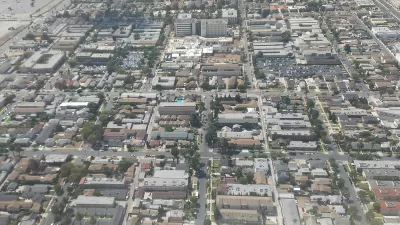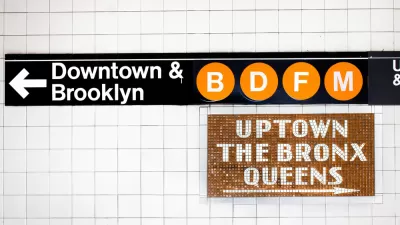City Observatory's Joe Cortright examines how immigration rates affect regional economic development. This research indicate that policies that exclude immigrants are not only mean, they are also stupid.

"America is a nation of immigrants, and its economy is propelled and activated by its openness to immigration and the new ideas and entrepreneurial energy that immigrants provide," writes Joe Cortright, in a focused response to recent proclamations by the Trump Administration limiting immigration and travel to the United States.
Cortright provides numerous examples of the obvious and out-sized benefits famous immigrants have offered the United States, before turning his attention to the scale of the contribution to the U.S. economy by "foreign-born talent."
"Several of the nation’s most productive metropolitan areas–San Jose, San Francisco, New York and Seattle–all have above average levels of foreign-born persons among their best educated," according to Cortright.
And in case you're looking for a succinctly phrased, but still multi-faceted argument against the Trump's Administration policies, here's Cortright's concluding paragraph:
There are a lot of reasons to oppose President Trump’s ban on immigration from these Islamic countries. The most important reasons are moral, ethical and legal. But on top of them, there’s a strongly pragmatic, economic rationale as well: the health and dynamism of the US economy, and of the metropolitan areas that power the knowledge-driven sectors of that economy, depend critically on the openness to smart people from around the world.
FULL STORY: Openness to immigration drives economic success

Maui's Vacation Rental Debate Turns Ugly
Verbal attacks, misinformation campaigns and fistfights plague a high-stakes debate to convert thousands of vacation rentals into long-term housing.

Planetizen Federal Action Tracker
A weekly monitor of how Trump’s orders and actions are impacting planners and planning in America.

San Francisco Suspends Traffic Calming Amidst Record Deaths
Citing “a challenging fiscal landscape,” the city will cease the program on the heels of 42 traffic deaths, including 24 pedestrians.

Adaptive Reuse Will Create Housing in a Suburban Texas Strip Mall
A developer is reimagining a strip mall property as a mixed-use complex with housing and retail.

Study: Anti-Homelessness Laws Don’t Work
Research shows that punitive measures that criminalized unhoused people don’t help reduce homelessness.

In U.S., Urban Gondolas Face Uphill Battle
Cities in Latin America and Europe have embraced aerial transitways — AKA gondolas — as sustainable, convenient urban transport, especially in tricky geographies. American cities have yet to catch up.
Urban Design for Planners 1: Software Tools
This six-course series explores essential urban design concepts using open source software and equips planners with the tools they need to participate fully in the urban design process.
Planning for Universal Design
Learn the tools for implementing Universal Design in planning regulations.
Heyer Gruel & Associates PA
JM Goldson LLC
Custer County Colorado
City of Camden Redevelopment Agency
City of Astoria
Transportation Research & Education Center (TREC) at Portland State University
Jefferson Parish Government
Camden Redevelopment Agency
City of Claremont




























